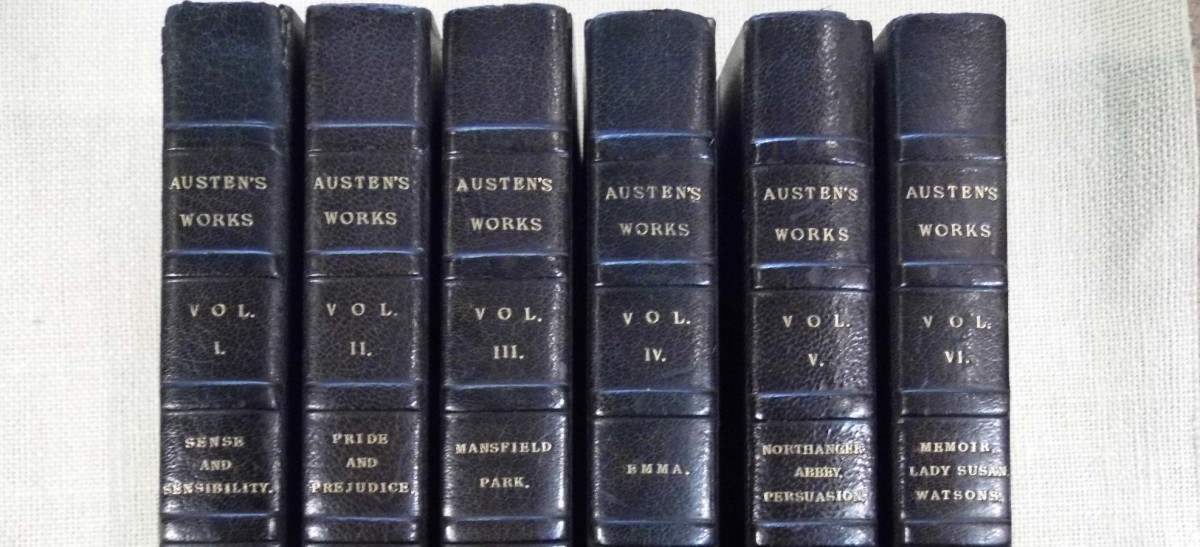The first semester’s work on our Annotating Austen project is in the books, so to speak, and the next group is about to begin their work. What follows is a composite summary of the reflective essays the Spring 2016 students wrote with their Spring 2017 successors in mind (the prompts for this “Reflective Essay Assignment” can be found under the menu banner “Annotation Assignments” on the website). Overall, I have to say the Spring 2016 students were an enthusiastic bunch that, despite various logistical issues and other hiccups along the way, managed to produce high quality work on Northanger Abbey. In practice, they proved the basic premise of this project: that undergraduate students can participate in—and contribute to—the Jane Austen scholarly community. I’ve organized summaries of their collective comments around the three main categories of annotation that we hope to provide.
- Creative Reading Annotations
This level of annotation was universally popular. Many students discussed how much they enjoyed and profited from reading and commenting on other students’ “interpretive” or “opinionated” annotations. In effect, these annotations allow students to add more interpretive detail to the annotation system they (hopefully) already employ when reading a printed text: underlining passages, starring text, adding brief marginalia. One student noted that having to expand her short marginal comments using the hypothes.is tool required her “to think even further” about why she found a specific passage particularly interesting or important. Variations of the following student comment showed up often in the essays: “Looking over the creative reading annotations from others in the class helped me pay attention to certain details I had overlooked or not paid much attention to. They definitely opened my eyes to see new perspectives, correlations, and ideas I had not previously thought of, helping me to better understand parts of the novel.”
I also asked students for suggestions regarding how can we better incorporate these “Creative Reading” annotations into classroom discussion. We only managed to reference or summarize a few, which seemed inadequate given the amount of work put into them. Several students suggested in-class strategies for allowing their creative reading annotations to “come alive in conversation.” These include having small groups share and discuss their annotations; have students pair up and read each other’s annotations and discuss; or have me choose several strong annotations, project them on the screen, and discuss as a class. We’ll attempt to implement some version of one of these strategies this semester.
- Cultural/Historical Annotations
Many students commented on both the value of doing the research for these annotations and the value that they potentially represent to a user of the website. These are the annotations users of the website will see because they show up in the “Public” domain of the hypothes.is tool. The ability to supplement text with visual media—pictures and video clips—makes our online editions of Austen’s novels unique, and students embraced this “functionality” with gusto. Even simple definitions, as for a reference to “a muff,” could be easily augmented with a period image illustrating the thing itself in use. In addition, references to Regency-era dances could be linked to short video clips on YouTube. As one student succinctly said, “When a character is talking about a tear in her ‘mechlin,’ having a visual really does help.”
I gave over two class periods during the semester for “Annotate-a-thons.” The first was devoted to composing and posting annotations, the second to group editing and revising as needed. Some students suggested it would be better to have everyone compose and post their annotations as homework, and then devote all the in-class time to revising, editing, and proofing. There is a valid argument for this, especially since this is the pubic face of the project, and strong, accurate, and well-written annotations in this category are essential. We do need to spend more time editing and refining these.
While many felt the class as a whole had done a fairly thorough job annotating Northanger Abbey in this context, some students articulated the value of having subsequent groups both add to and edit their work. Currently, annotations produced by one student cannot be edited or revised by anyone else (not even me as “curator”) although I think the hypothes.is development team is working on making this possible in future. It would certainly be awkward for the end user of the site to have annotations building on, or superceding, previous annotations for a particular reference in the novel. The ability to revise or edit a single annotation would be most desirable.
The consensus among Spring 2016 participants was that we should move on to the next novel, Sense and Sensibility, and try to get as far as we can with cultural/historical context annotations for this novel in Spring 2017.
- Criticism Annotations
Truth be told, we ran out of time in Spring 2016 to do anything with this idea. Students agreed that it would be interesting and useful to provide a layer of annotation that linked specific passages in Austen’s novels to published work by professional critics. This could be as simple as highlighting the Austen passage quoted by the critic, and providing an annotation that summarizes how the critic interprets the passage in the service of his/her overall argument. Each annotation would also include a short bibliographic citation, or possibly a link, to the essay or book in question. One student argued that, as a first time reader of an Austen novel, she would not want to see such criticism annotations for fear of overly influencing her own perspective on the text. Fair point. More thought is needed as to where this layer of annotation might live, and how a user might be able to choose to see it or not. This will likely be something we come back to once those logistical issues are solved, and perhaps even after we’ve provided cultural/historical annotations for all six of Austen’s published novels.
